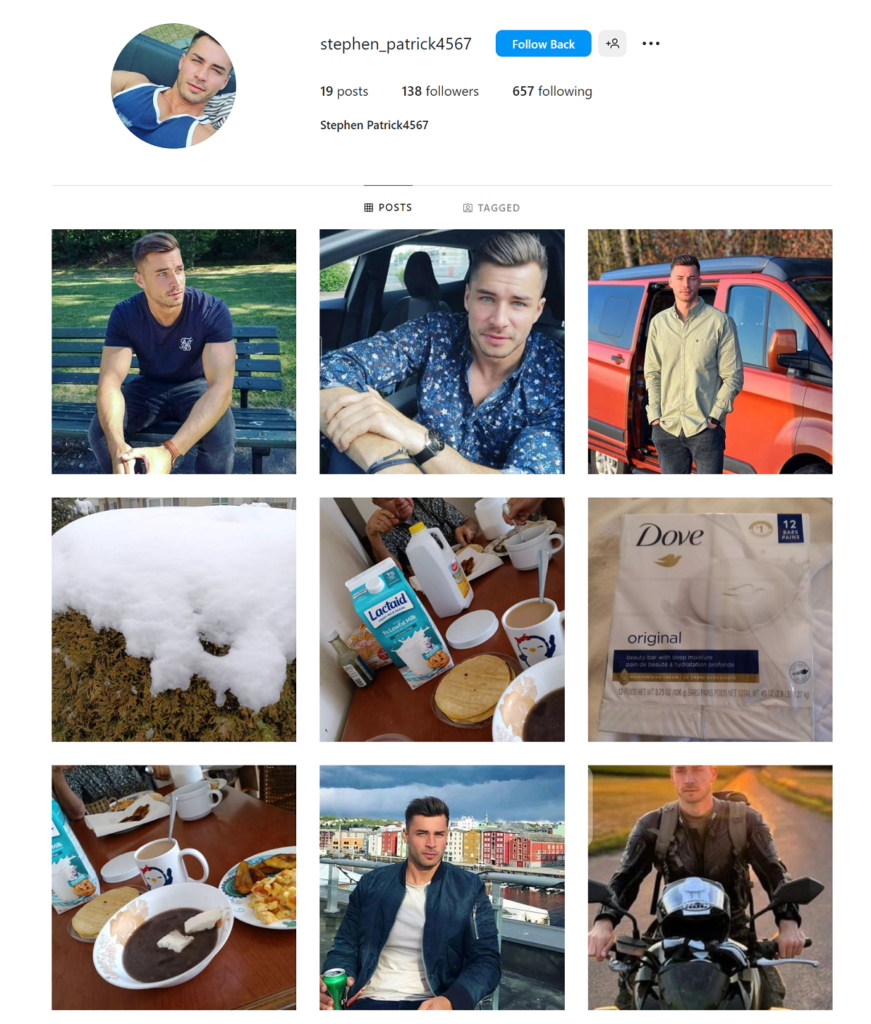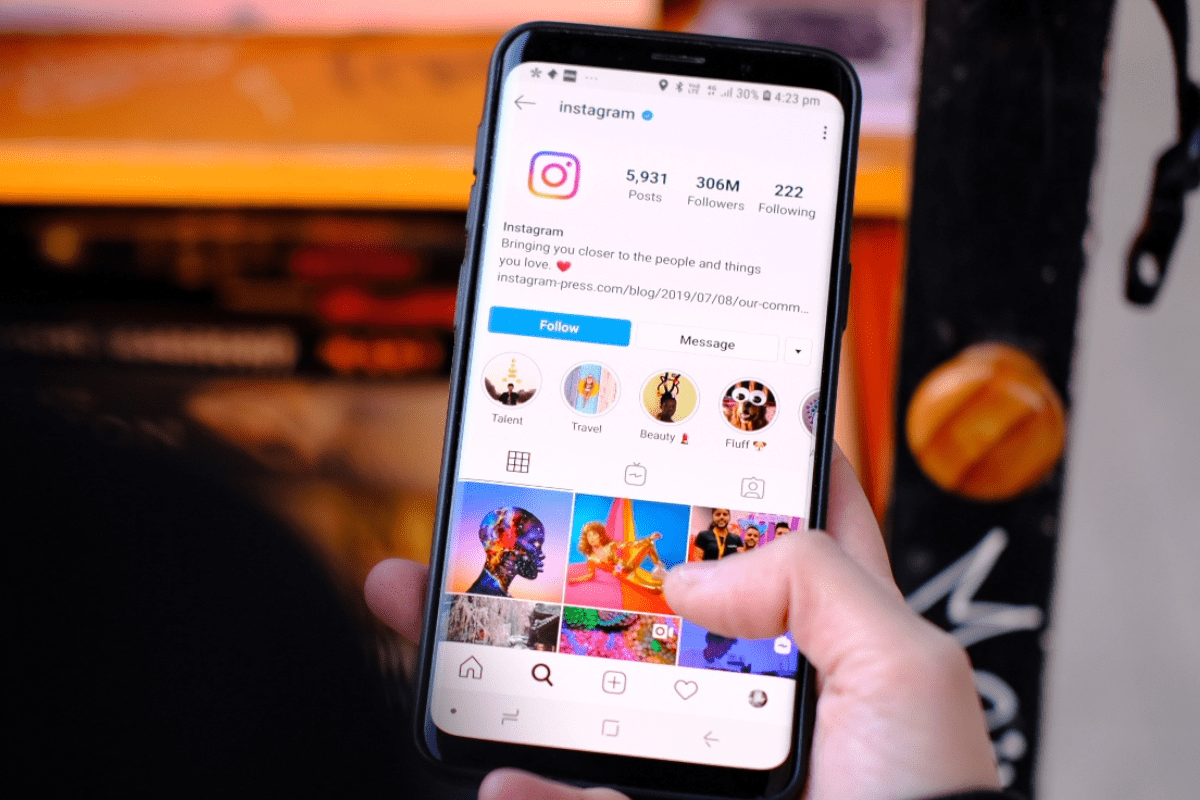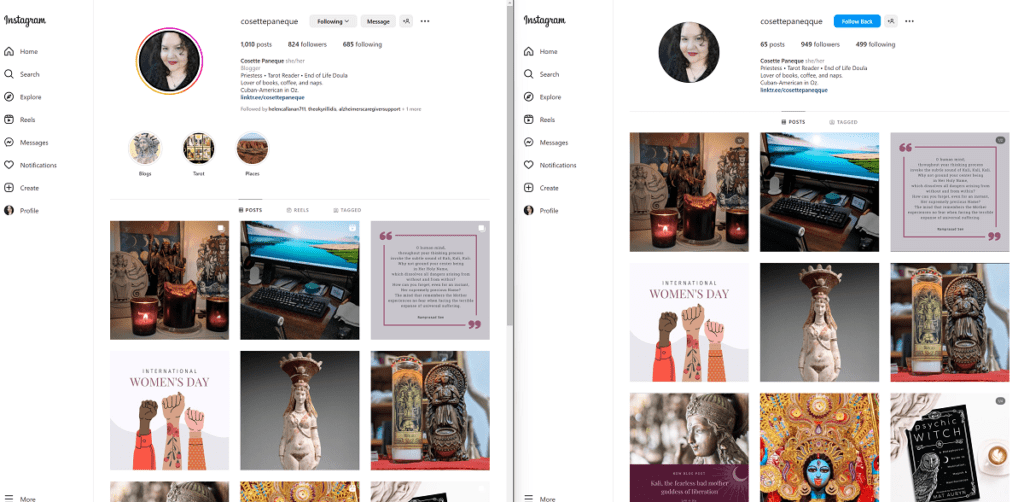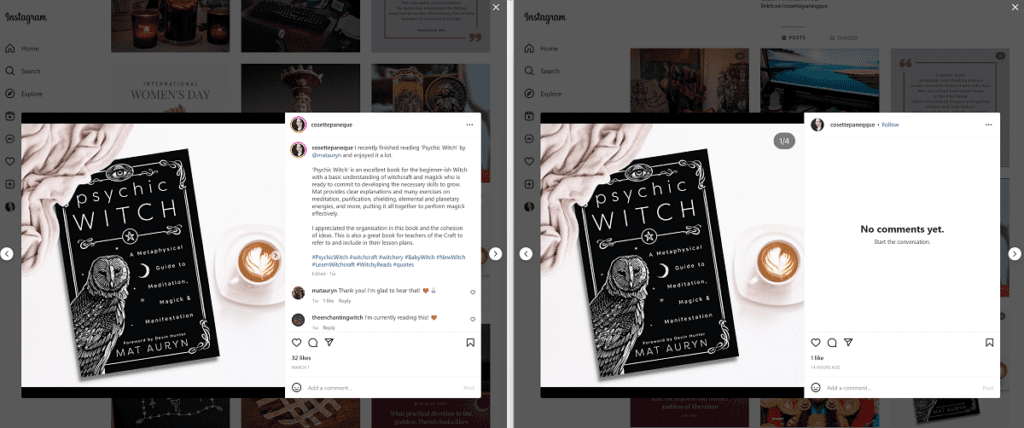Instagram scams are a pet peeve I didn’t know I had. Every day, I gain one or more fake followers that are either “clones” of people and businesses I know or accounts that I otherwise identify as fake. Most days, I report and block them. Occasionally, I feel resigned to the fact that this is the current state of Instagram, and I ignore them–for a few hours at least until my netrage wakes back up. I feel sorry for the victims of these scams and outraged that social media platforms don’t do more to protect users.
I’ve been thinking and jotting down notes about this issue all week, and ironically, I woke up today to an Instagram direct message from a friend informing me that my account had been cloned. It’s not the first time; scammers have cloned my accounts on Facebook, Twitter, and TikTok. Many people I know have had their accounts cloned, and scammers have also targeted us in other ways.
It happens all over social media, but I see it the most on Instagram. It’s mostly catfishing, and I’ve experienced two approaches–cloning accounts and creating fake personas–all for financial schemes.
Catfishing
Catfishing is a form of social engineering, the psychological manipulation of people designed to exploit you and gain private information or access. Catfishing is when a scammer creates a fake social media profile using other people’s photos and information. We see this on Instagram in two main ways: cloned accounts and fake personas.
With a cloned account, someone has created an account that looks like yours. They use your name, profile information, photos and videos. They follow some of the same people you follow and send friend requests to people you may know. The scammer pretends to be you to trick your friends.
Because of the interests I share on Instagram and the people that I follow, what I tend to get from these cloned accounts are DM with offers for psychic readings. They usually say things like, “Hello, dear. I was drawn to your energy and feel you need a psychic reading.” Less often, they are cryptocurrency and NFT scams.
The other form of catfishing I see is the scammer who created a fake account using a phoney name and photo. It differs from the cloned account because it’s not a replica of an existing account. The name and photo may not even belong to the same person.
As a woman, I get these mostly from accounts that present as male. Typically, they follow me and DM me saying something like, “Hello, dear. I was so attracted by your beautiful smile and would like to get to know you better.” These are mostly romance schemes, and the scammer is not pretending to be anyone in particular, but they are pretending to be a type: handsome, successful, and often in the military (more on this in a moment) through sometimes they appear to be in Europe.
The Instagram scams
The scams are basic. In short, they want your data and money, and they attempt to gain these using different techniques, such as:
- sending malicious links and attachments to you and your friends
- persuading you to download an app
- convincing you to make a purchase
- gaining your trust and then using a pitiful story to ask you for money
Sadly, they work. According to the Federal Trade Commission, social media scams resulted in $1.2 billion in consumer losses in 2022.
How to identify a fake Instagram account
Although it’s not hard to spot a fake account, the red flags are easy to miss, and you must look closely. Let’s consider the two types of catfishing separately.
The clones
Let’s start with the clones. If you and I are connected, getting a friend request or follow from me using an identical account makes little sense, especially without an explanation. That’s your first red flag. Ask the person through the original account or another platform if that second account is theirs.
Second, take a close look at the account. Clones look alike, but only on the surface; they’re not identical. Let’s play a game of spotting the difference with the latest clone of my Instagram account.
Photos of my account are on the left; the scam clone is on the right. Click on the images to see them larger.
A clone can’t use your name exactly. In this case, the scammer has added an extra ‘q’. Sometimes, they use characters or numbers.
I have posted over 1k single images, carousels, and videos over years. The clone has 65 posts that all went up within a few hours. Notice also that my Reels are just pictures on the clone, and Instagram’s carousel symbol on the upper right corner of a post is replaced with numbers on the clone.
My posts have captions, hashtags, likes, and comments. The clone doesn’t.
I have followers and am following people that you probably know. The clone is following some of my friends; that’s part of the scam, but mostly it’s a lot of accounts we don’t know, many of them foreign.
Because I have a professional Instagram account, I am identified as a Blogger, and the clone has no title.
The Linktree on the clone has the extra letter and goes nowhere.
I have Highlights; the clone does not.
I have Stories; the clone does not.
Here’s a big red flag: a DM trying to sell you something.
As Michael Herkes, the author of The Glam Witch, told The Wild Hunt last year when they covered copycat accounts affecting Pagans, “Always remember that real authors and public figures do not reach out in DMs to solicit their services directly to you. Our services are posted for you to reach out if you are interested.”
Let’s move on to the fake personas.

The fake persona
The image above is an example of a fake persona that recently started following me (and some of my friends). I call these the Fake Boyfriends and they also come in Porn Girlfriends. How can I tell it’s fake?
I couldn’t verify this identity anywhere else. ‘Stephen Patrick’ is a common name, which makes him hard to find. I could not find this face and name together are on Facebook, Twitter, or LinkedIn.
Searching images with Google, I found Stephen Brown on TikTok also uses these photos. That account appears to be fake too. This poor (yet handsome) guy probably has no idea his content is being used this way.
There’s no profile info, links to other accounts, descriptions or hashtags in his photos.
If you look at his photos on a large screen, you’d see the quality is poor, and they are likely screenshots, not originals.
The way they engage with users is probably the biggest red flag. These accounts are primarily for romance scams. They flirt and make regular contact, but they always have excuses for not calling, camming, or meeting. They’ll tell you they’re travelling or in the military to explain their varying contact times or time zone difference and cover up that they’re in an Asian or African country. They’re not native English speakers, which usually comes across in their grammar, sentence structure, and phrasing. When I get a DM that starts with, “Hello, dear,” that tells me everything I need to know.
How to protect yourself
There are two victims here. One victim is the person whose identity is stolen to create a fake account, and the other is the person that the scammer targets.
Unfortunately, there’s not a lot you can do to prevent someone from stealing your identity on social media. The one thing that can help is making your accounts private and friends only. The less you expose, the less a scammer can take from you to create a fake account. But if you’re a business, club, active community member, author, influencer, or like to share your content with the world, you may not want to make your account private, and that is understandanble.
Let’s be clear that if a person has a public account, they are not “asking for trouble”; place the blame where it belongs on the perpetrators and social media platforms who refuse to do more to keep their users safe.
If you are the target of a scammer, don’t engage. Don’t connect; do report and block. Alert your friends. In my experience, social media platforms are likely to remove a fake account the more it is reported. Share the phoney account with Scammer Alert Page. Priestess Nova will share it, and her followers will be all over it
The best way to protect yourself from catfishing scams is to learn to recognise them and support your community to help get fake accounts closed. Social media platforms are not there for us, so let’s be there for each other.
Now, please report my clone for impersonating someone you know: https://www.instagram.com/cosettepaneqque



